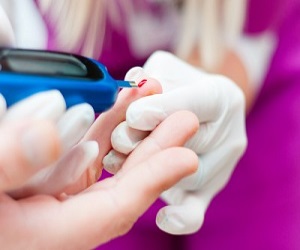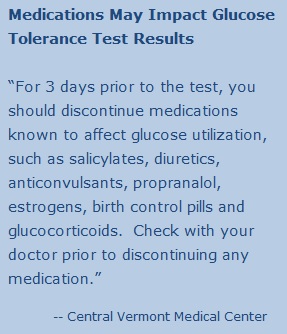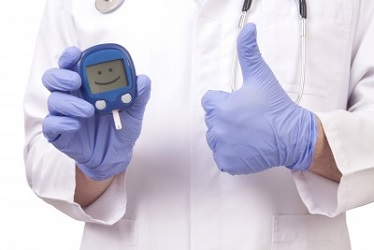Testing for Diabetes and a
Pre Diabetic Diagnosis
Your doctor may recommend some testing for diabetes if he or she suspects pre diabetes may be having an impact on your health.

The first step is to test for a prediabetic condition. Otherwise you can’t have a definitive diagnosis. Additionally, testing for pre diabetes can help determine whether or not something else may be causing your symptoms.
Who Should Be Tested for Pre Diabetes?
According to the American Diabetes Association, anyone who scores five or higher on their diabetes risk testshould be tested for pre diabetes. The Mayo Clinicfurther indicates that the following are risk factors for pre diabetes that also warrant further testing:
Body mass index (BMI) above 25
- Family history of type 2 diabetes
- High cholesterol
- Inactive
- High blood pressure
- Aged 45+
- Minority descent
- Polycystic ovary syndrome
- History of delivering high birth-weight baby (typically 9 or more pounds)
- History of gestational diabetes
Be aware that not all of these risk-factors are required for you to have pre diabetes. This condition can strike people of all races, sexes, and ages. If one or more of these risks factors applies to you, it is better to err on the side of caution and take the diagnostic testing required to confirm or rule out pre diabetes.
In addition, be aware that there are not always verifiable symptoms associated with pre diabetes. That’s why it’s so important to request testing for diabetes if the risk factors mentioned above apply to you.
How is Pre Diabetes Diagnosed?
Depending on your physician, any one or more of the following three tests may be used to confirm a suspected case of pre diabetes. They include:
- the Hemoglobin A1C Test,
- the Fasting Plasma Glucose Test (FPG), and
- the Oral Glucose Tolerance Test (OGTT).
According to the American Diabetes Association, some doctors may refer to pre diabetes by a different name, depending on the test used to diagnose it.

For instance, it’s possible you may also hear the terms Impaired Glucose Tolerance (IGT) or Impaired Fasting Glucose (IFG). Be aware that most physicians generally want at least two corroborating test results before offering a diagnosis of pre diabetes.
Once the tests are complete and a diagnosis has been confirmed, it’s time to sit down with your doctor, health coach, or other medical professional and explore your treatment options so you can begin making plans for the future. In the meantime, it’s a good idea to learn as much about pre diabetes and what it means for you.
How Have Diagnostic Standards for Pre Diabetes Changed?
In 1997, American Diabetes Association Expert Committee called for a change in terminology from juvenile-onset diabetes, adult-onset diabetes, insulin dependent and non-insulin dependent to Type 1 and Type 2 diabetes instead. The goal of this decision was to identify the condition according to its characteristics, rather than the age or prescribed treatment method.
Another change that took place in 1997 was to update the criteria for the fasting plasma glucose testing for diabetes to 126 mg/dL or higher as an indication of Type 2 diabetes from the previous level of 140 mg/dL or higher. They kept the oral glucose tolerance test requirement at 200 mg/dL, however, as the benchmark score for those who were not pregnant.

The A1C hemoglobin test for diabetes has been around for quite a while. However, it wasn’t until 2010 that the American Diabetes Association started recommending the test as a diagnostic tool for Type 1 and Type 2 diabetes.
Changes in pre diabetes and diabetes testing standards have been made to test people who present certain risk factors, even in the absence of diabetes symptoms. The belief is that by identifying pre diabetes, early intervention can prevent the development of diabetes mellitus. With this goal in mind, the American Diabetes Association suggested that physicians test adults with a Body Mass Index greater than 25 who have one additional risk factor for diabetes and to repeat the testing for diabetes at three-year intervals if those tests are normal.
Now that you’ve learned about what pre diabetes is, it’s time to learn more about the risks both from the risk factor of developing the condition, and the risks the condition itself represents. Education is the key to prevention and avoiding a pre diabetes diagnosis in the future.
Related Articles:
- Talking To Your Doctor About Pre Diabetes and the First Signs of Diabetes
- The Hemoglobin A1C Test
- The Oral Glucose Tolerance Test
- The Fasting Blood Sugar Test
Return from Testing for Diabetes and a
Pre Diabetic Diagnosis to the Home Page




